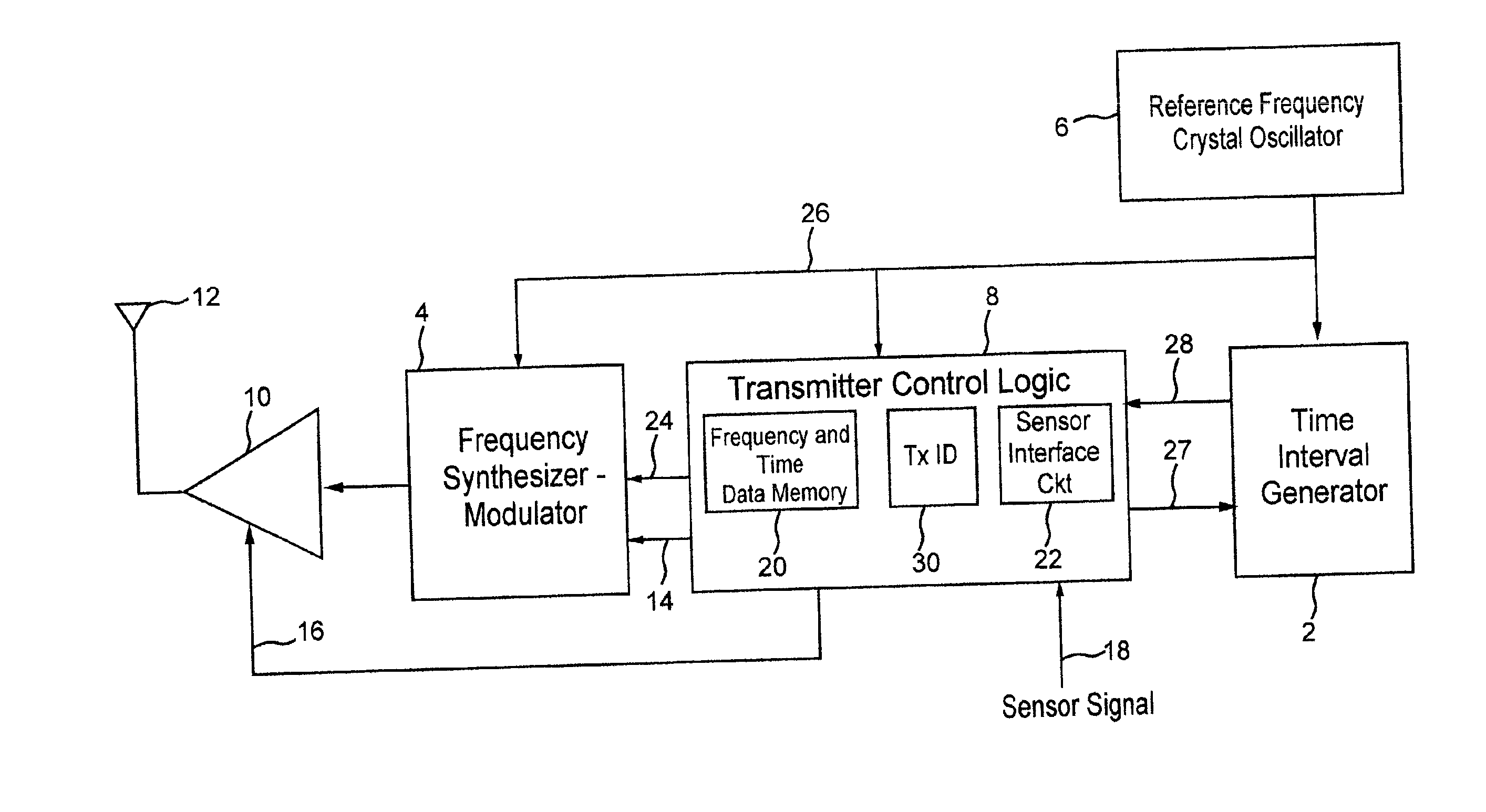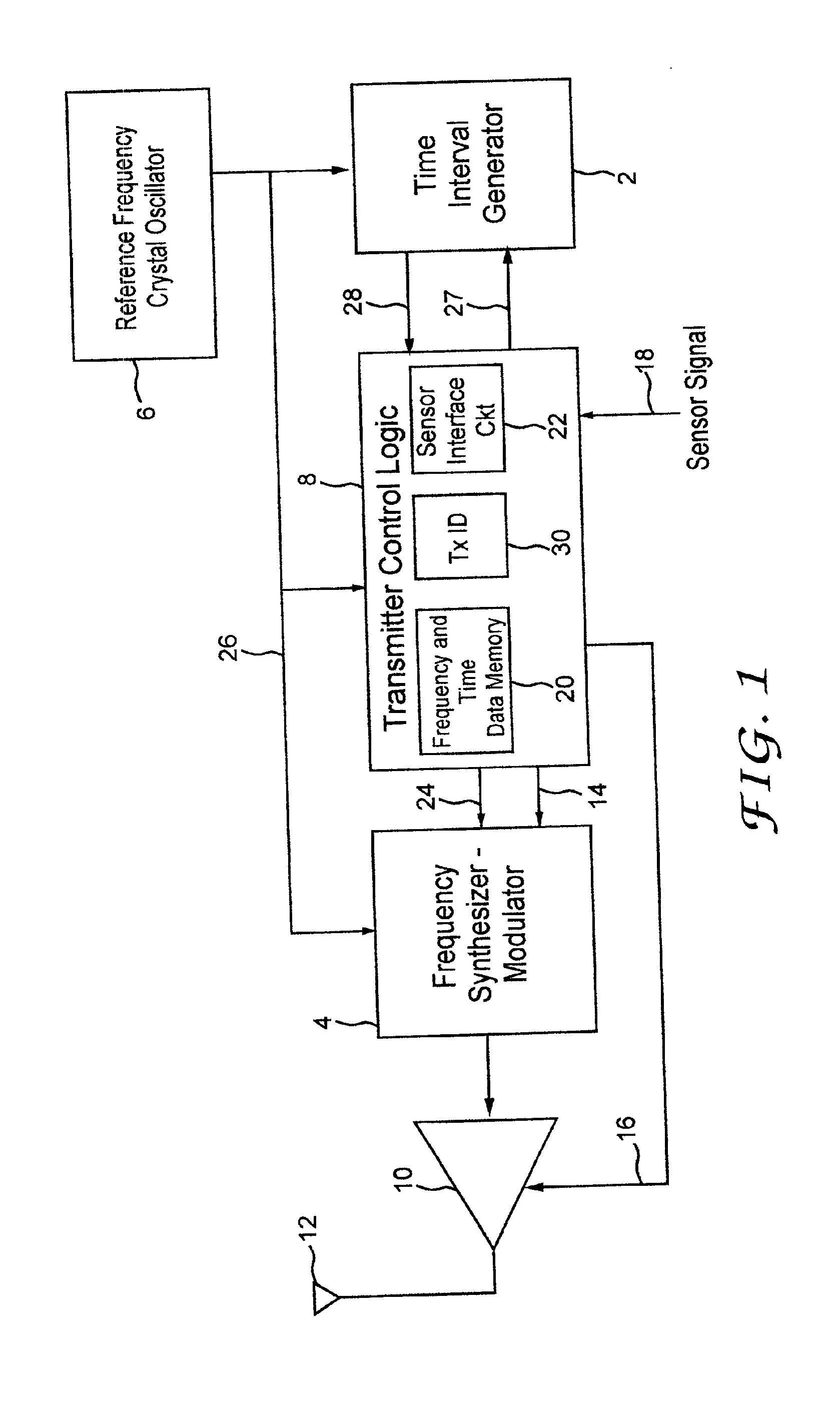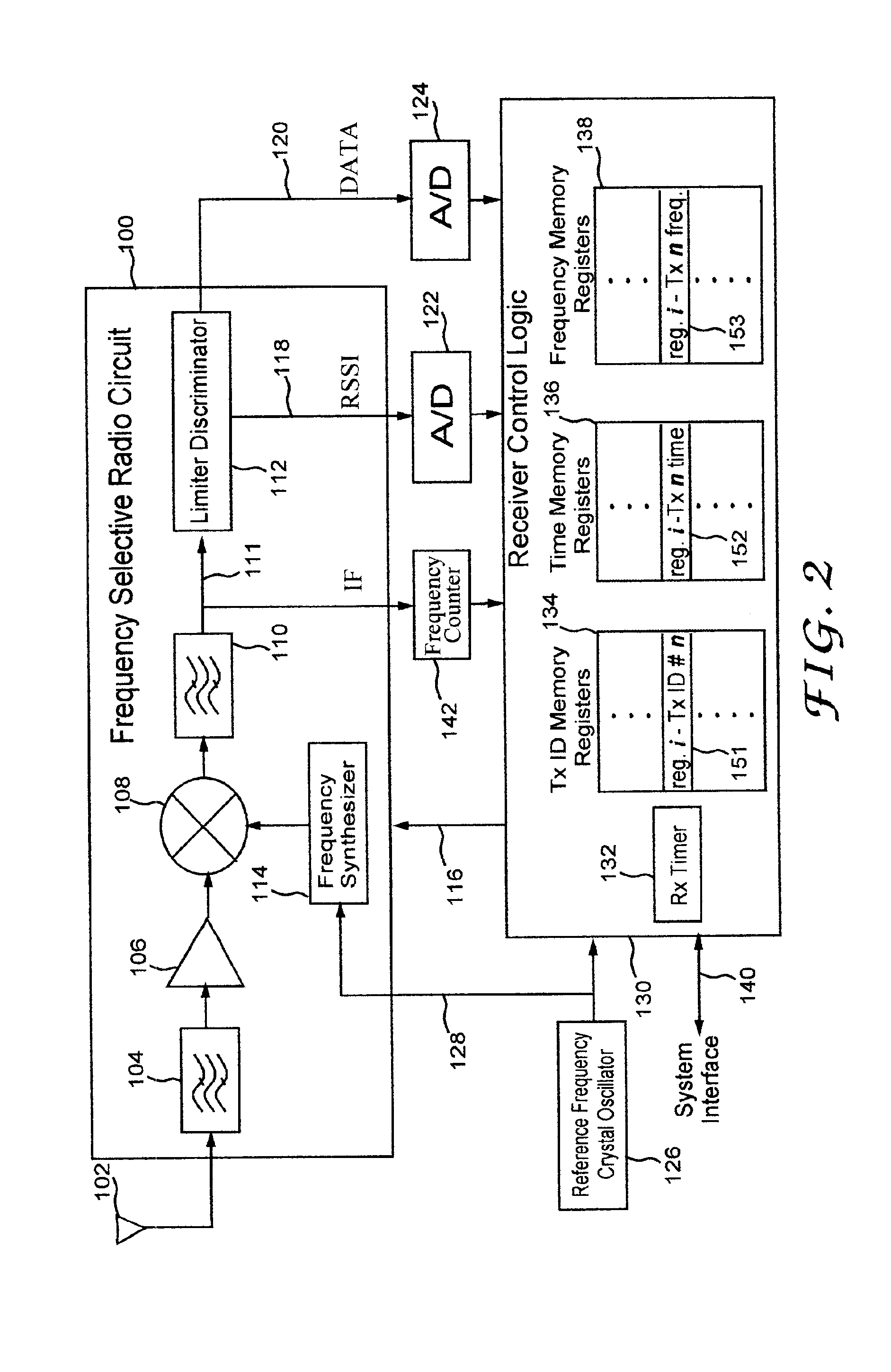Transmission of urgent messages in frequency hopping system for intermittent transmission
a frequency hopping system and transmission system technology, applied in the field oftelemetry, can solve the problems of large power drain, low probability of data loss, system damage, etc., and achieve the effect of minimizing collision effects, minimizing collision effects, and improving system reliability
- Summary
- Abstract
- Description
- Claims
- Application Information
AI Technical Summary
Benefits of technology
Problems solved by technology
Method used
Image
Examples
Embodiment Construction
Referring to FIG. 5, the illustrative embodiment of the present invention depicts telemetry system comprising: receiver 401 and a plurality of transmitters 402, 403, 404 and 405. Receiver 401 is a wireless receiver as described in detail below that includes a system interface 410 through which the receiver can be connected to interface equipment (e.g., a controller, a computer, etc.).
Each transmitter includes an interface or a sensor or an operation to be monitored, and each transmitter intermittently transmits short messages to the receiver that indicate, among other things, the status of the associated sensor(s) or device(s) or operation(s). The transmitters are not connected to each other and do not receive messages back from the receiver. I.e. a transmitter does not have the capability to receive signaling, timing or data from other transmitters or from the receiver. Furthermore, a transmitter transmit messages when it needs to without any regard to whether the other transmitter...
PUM
 Login to View More
Login to View More Abstract
Description
Claims
Application Information
 Login to View More
Login to View More - R&D
- Intellectual Property
- Life Sciences
- Materials
- Tech Scout
- Unparalleled Data Quality
- Higher Quality Content
- 60% Fewer Hallucinations
Browse by: Latest US Patents, China's latest patents, Technical Efficacy Thesaurus, Application Domain, Technology Topic, Popular Technical Reports.
© 2025 PatSnap. All rights reserved.Legal|Privacy policy|Modern Slavery Act Transparency Statement|Sitemap|About US| Contact US: help@patsnap.com



